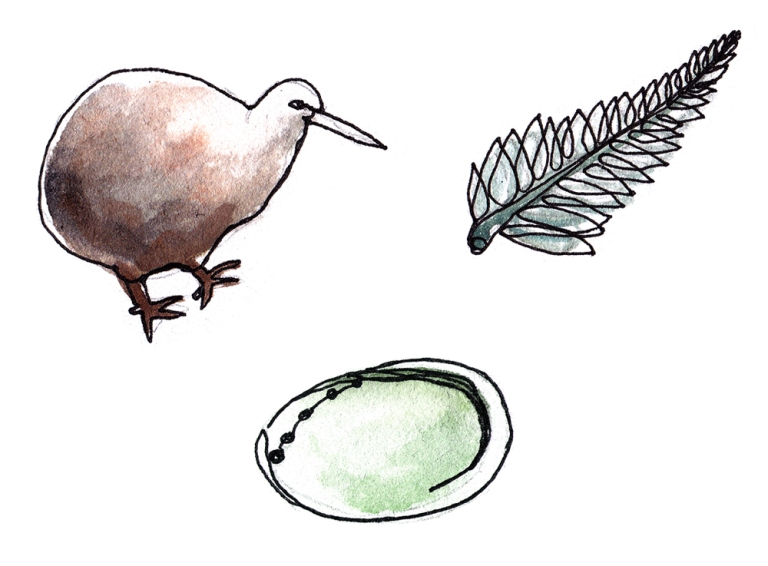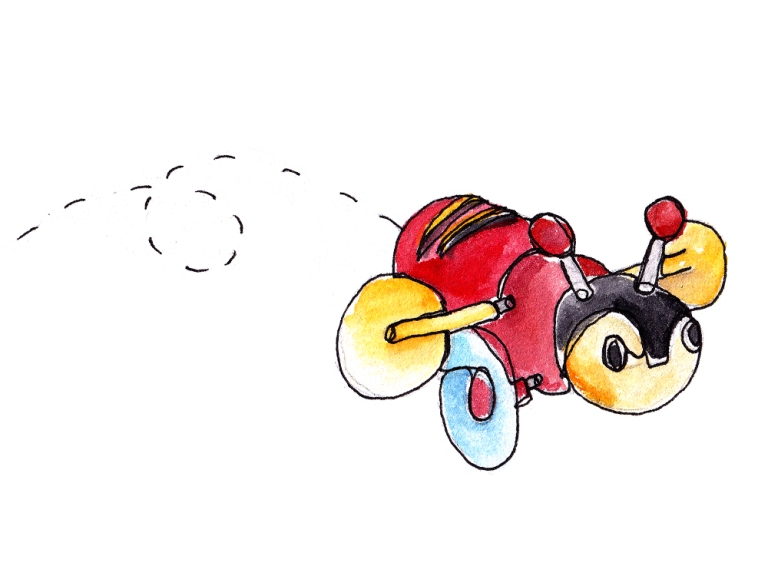New Zealand is known to be the land of the ‘kiwi’, to which they boast this fact. The term is used as slang to identify someone as a New Zealander, and souvenir shops are lined with Kiwi plushies and other various quirky imageries of the nation’s iconic animal. This quirky, kitsch culture is known as ‘Kiwiana’, where an array of ephemera, iconic images and mannerisms emit a sense of Kiwi-ness – just like how Australians have a classic Aussie culture. Examples of Kiwiana can range from “fush ‘n’ chups”, jandals and the Buzzy bee toy to the traditional silver fern, well-established koru pattern, and even the overabundance of sheep.

Whilst Kiwiana can seem like a whimsical and playful way to describe New Zealand’s national identity through tourism, a deeper sense of whakapapa can be gathered amidst the mix of all things Kiwiana. Through observing the colonial and Maori subjects of ephemera whilst at the Underground Markets at Frank Kitts park on the weekend, it was realised that the colonial souvenirs still acknowledged native flora/ fauna, key figures within the arts and crafts industry. A particular stall featured a range of vintage paintings mounted on cardboard paper of natural landscapes of Kiwi landmarks, and even some portraits of influential Māori people like Āpirana Ngata. Even though the subject matter depicted the original land in its original state of whakapapa, the style of painting and typography (of the city name) was very colonial, drawing to Pakeha influences. Therefore we can see a stereotyped motive for Kiwiana souvenirs in its use of the natural flora in a colonial context.

As previously mentioned, Kiwiana is also known for its ‘kitsch’ ephemera, in its whimsicality. Take the buzzy bee, it is a children’s toy, with bright colours and childlike connotations. Yet it is considered a ‘Kiwi thing’, thus producing a more contemporary national identity in a quirky way. On the opposite end of the spectrum, in the mass production of the pounamu green stone necklaces, it is obviously a manifestation of traditional Māori culture. Although majority of these necklaces are merely a knock off of the rare stone, it nonetheless points to one of New Zealand’s most treasured gems.
Researching Kiwiana brought me to the conclusion that we were constantly surrounded by it on the duration of our trip. What we thought were ‘traditional’ souvenirs, such as pounamu necklaces and silver fern clothing items also under the same category as some more ‘novelty’ items. It is the appropriation of Kiwi native wildlife that brings to light the design motives within the tourism industry, as both Maori and Pakeha influenced items have the same purpose of producing a ‘Kiwi’ identity, one way or another.
Thus, we can see the integration of two cultures to produce a contemporary national identity. By observing Kiwiana ephemera and their design’s purpose, they are a testament of the ever changing culture of New Zealand over time, building a contemporary national identity based on the concept of whakapapa. Whakapapa is therefore transformative, in the sense that through time, and the Kiwi identity is constantly evolving.
_______
Resources:
Christchurch City Libraries, Kiwiana – quintesentially Kiwi, online article, viewed 18 February 2017, <https://my.christchurchcitylibraries.com/kiwiana-quintessentially-kiwi/>
KiwianaTown, What is Kiwiana?, online article, viewed 18 February 2017, <http://kiwianatown.co.nz/about-kiwiana-town/what-is-kiwiana/>
New Zealand, n.d., Kiwiana, online article, viewed 18 February 2017, <http://www.newzealand.com/int/feature/kiwiana/>
Image source: Painted
Otorohanga, n.d., viewed 18 February 2017,<http://communitywalk.s3.amazonaws.com/assets/photos/22/84/274374_l.jpg>

I like that you were able to present Kiwiana in such a light-hearted manner and yet still use it as a metaphor to talk about the integration of cultures. It’s great that you were able to spot and identify these details and use them to create a link between Māori culture and history and a contemporary national identity.
LikeLike